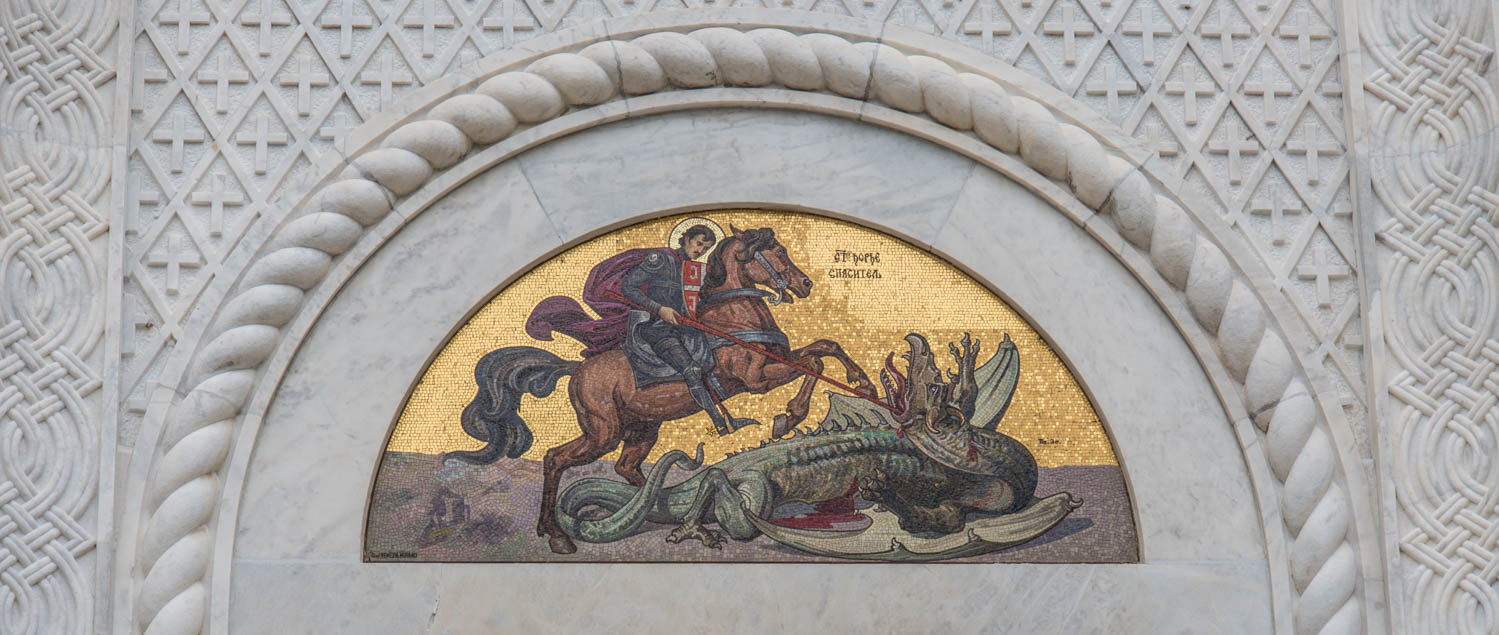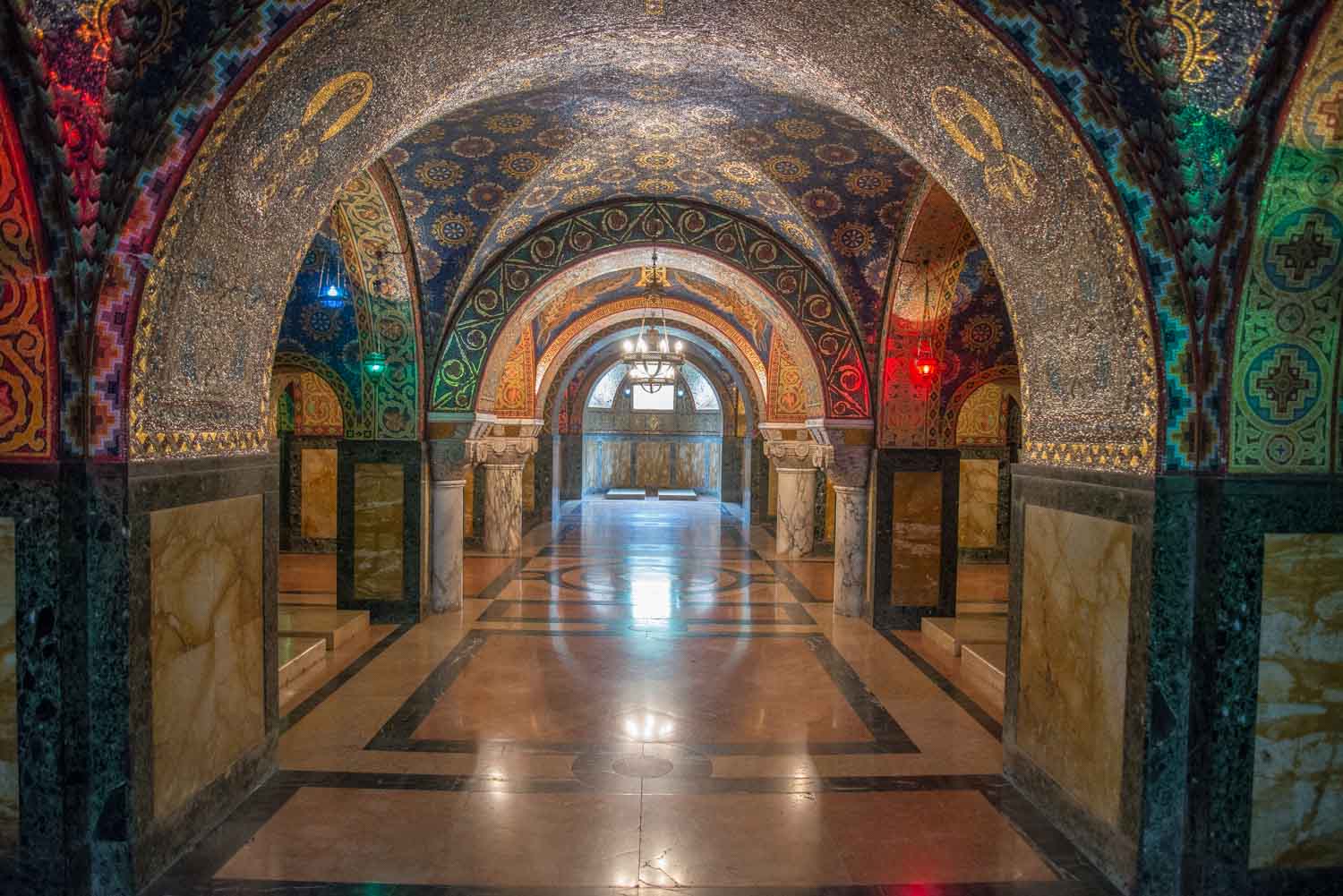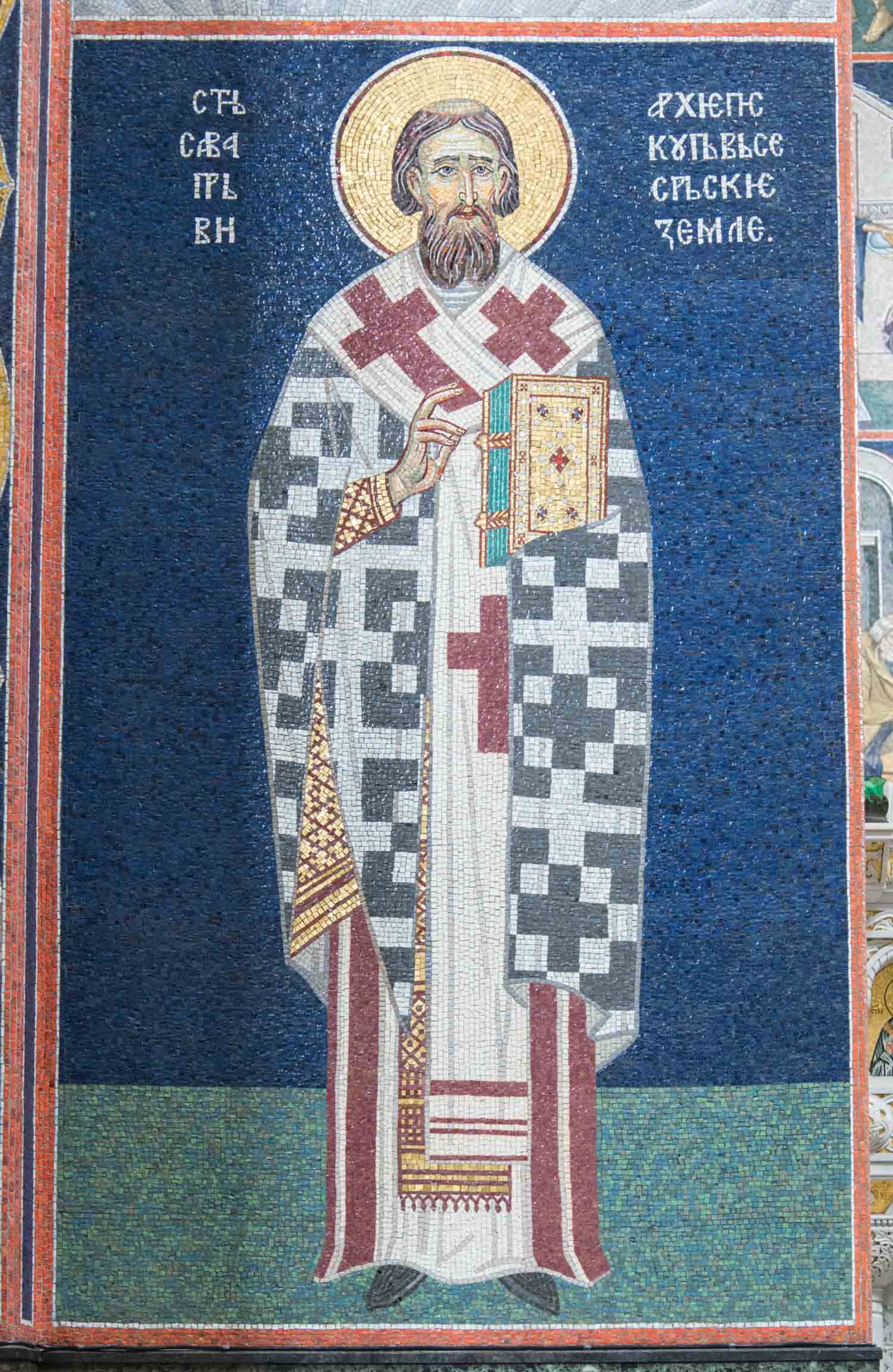Last night we were entertained by the melodious warbling of a Nightingale in the woods adjacent to our campsite. I could also hear the distant drone of my Scops Owl trying to catch up with me, but he’s not been very good at keeping track of me this year.
The campsite owner was good to his word and managed to get me off my pitch and up the steep site road to the exit with the minimum of fuss.
I had decided that instead of driving directly to our next campsite we would divert slightly to the famous national monument of St. George’s church (also known as Oplenac) in Topola. This diversion gave us a much better opportunity to scrutinise the Serbian countryside and we concluded we had been very unfair yesterday, based upon what we could see from the motorway. Each village had one or two decayed houses but generally the houses seemed of a good standard and the villages all appeared to be kept clean and tidy.
In general it has surprised us today how flat Serbia is. We have driven another 150 miles across the country and seen very few hills. In fact the last 40 miles were like driving in the Netherlands: completely flat with dykes everywhere for drainage. The resulting lack of mountains means intensive arable agriculture everywhere. Large fields of grain and vegetables.
We were very glad we had decided to visit Oplenac. It turned out to be one of the most beautiful buildings we have ever visited, especially its interior. Its history is that it was built between 1910 and 1912 by Yugoslavian King Peter I as a resting place for then current and future members of his dynasty. Construction was delayed by the Balkan Wars and the First World War and it was eventually finished in the 1920s, which Peter did not see, dying in 1921. The church itself contains Peter I’s remains and that of the founder of the dynasty Black George, a famous Serbian freedom fighter, hence the dedication of the church to St. George. The crypt contains 27 members of the family.
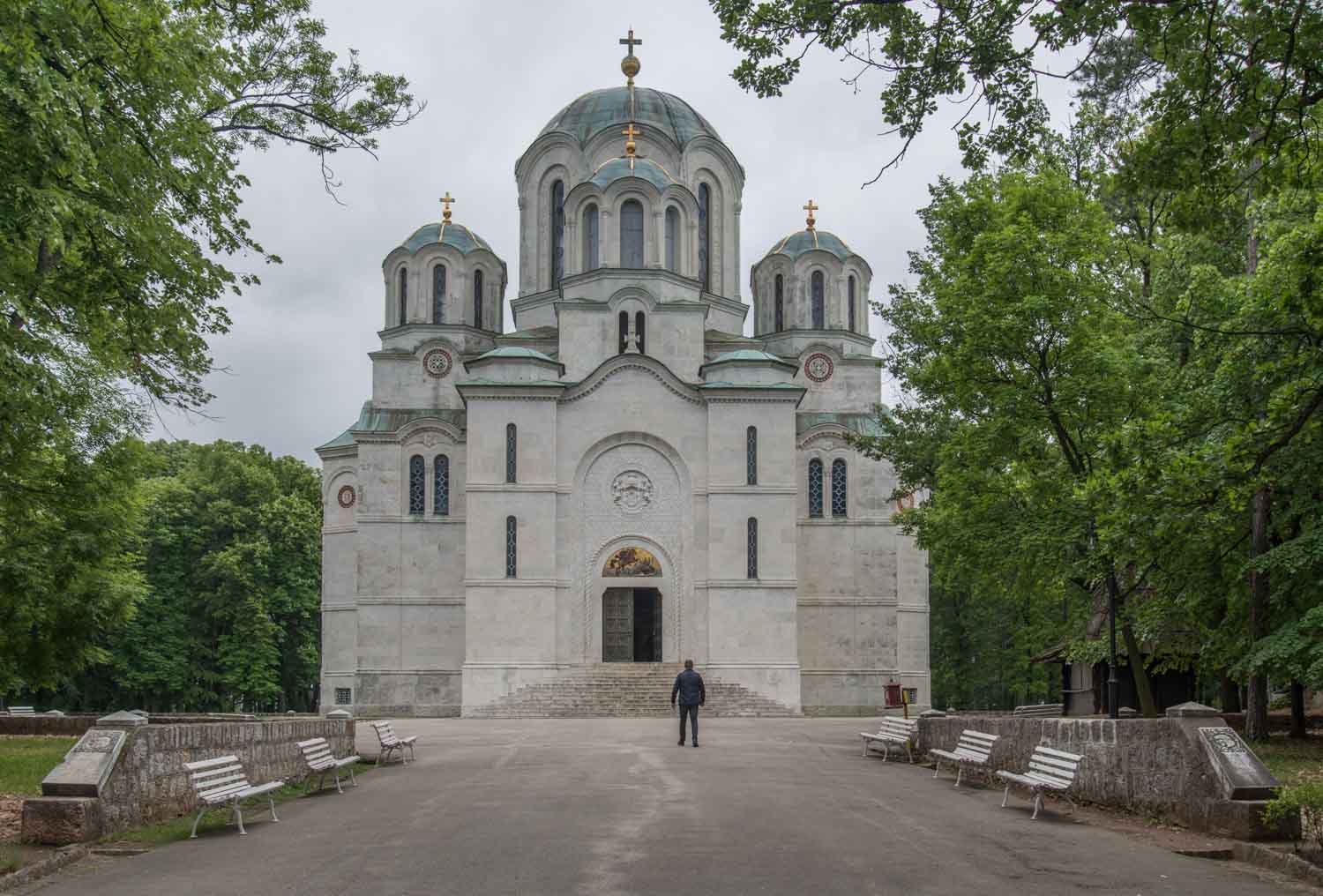
The exterior of the church is built from Serbian marble and Italian Carrara Marble is used for some of the interior. The highlight of the church and the crypt are stunning mosaics made from over 40 million pieces of Murano glass, some covered in 14 carat gold leaf. The interior of the church is covered in religious images and is bright, showing the mosaics in the best possible light. The crypt, although dark, is, if anything, even more stunning with the use of brighter coloured glass and abstract patterns. The whole effect was mesmerising.
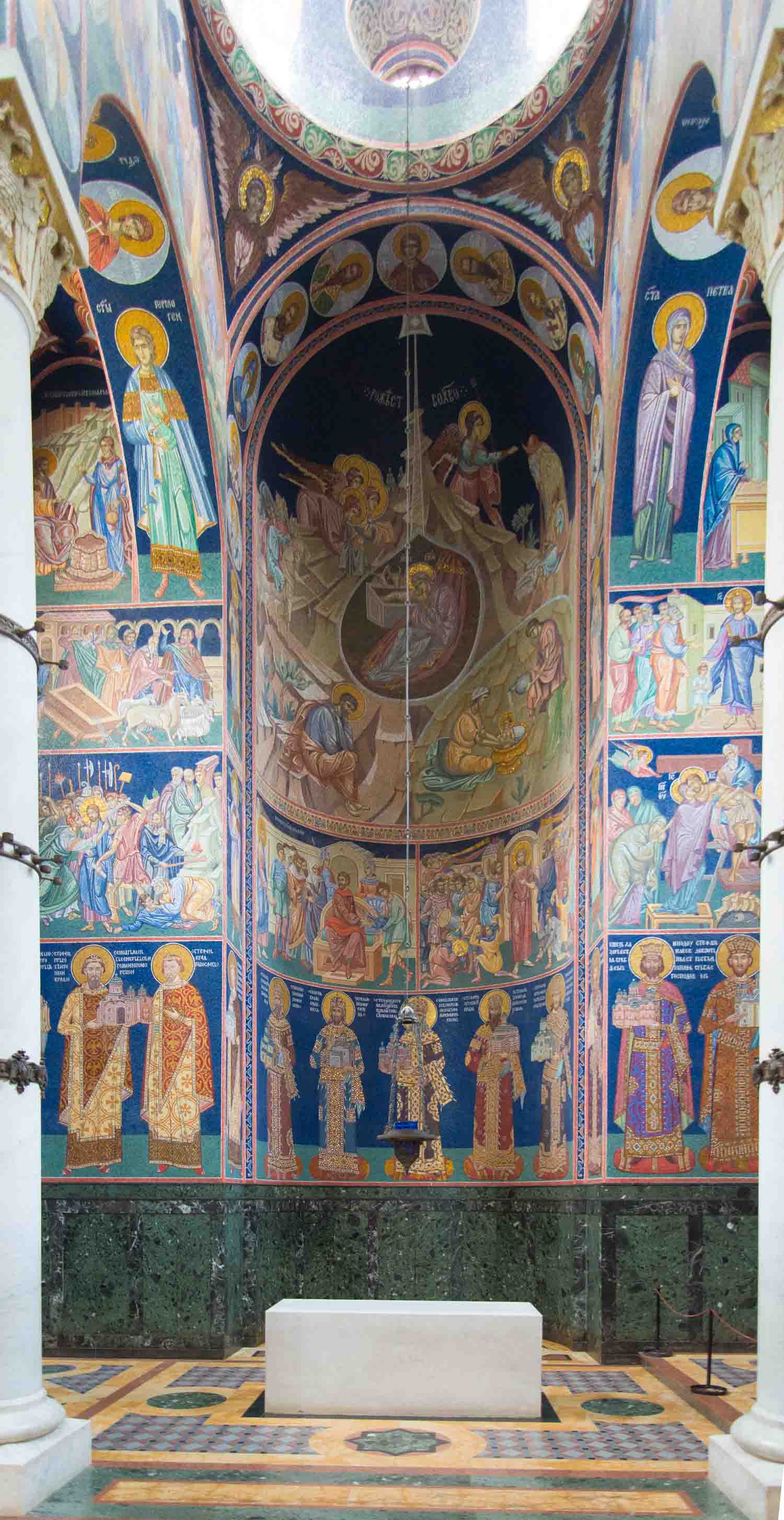
There are also museums to see in the King and Queens houses nearby, but we still had a long drive and so didn’t investigate them.

Although the drive was meant to be long, it should have been straightforward: around Belgrade on a ring road and directly to the campsite which I had partly chosen because it was on a main road. SatNav had different ideas of course. At a critical moment, as we were approaching Belgrade, it suddenly told us our route was not suitable for large vehicles and took us off the motorway. By the time we realised he was probably wrong he had diverted us through the centre of Belgrade!! Dualling with 20 year old buses and 40 year old trams we made our way slowly through the city and over the Danube and then spent two hours wending our way on side roads on the south bank of the Danube when I knew full well that there was a major road we should have been on just across the river. The Danube is so wide here, that bridges are few and far between.
Just before we reached our campsite, going through a village, two policemen, standing by the road, pulled us over. They had seen that Basil’s bonnet had fallen down. The first time this has happened for a few weeks. They asked to see our papers in a very friendly manner and sent us on our way.
Our campsite is Coffeecamp-Kovilj (45.241450, 20.026370 €20 including electricity and fast wifi) and we were welcomed by the owner who speaks immaculate English. I showed him the “registration papers” that the last campsite had issued us and he had a good laugh. He explained that the registration papers we had been given were firstly no longer necessary, unless you are staying with a private family. All tourist establishments now register guests on line. Secondly the old registration documents were formal cards (he showed us some) with an individual registration number on each one. What we had been given was simply something printed on the campsite’s printer and the official stamp, he pointed out, was in fact just the stamp of the campsite.
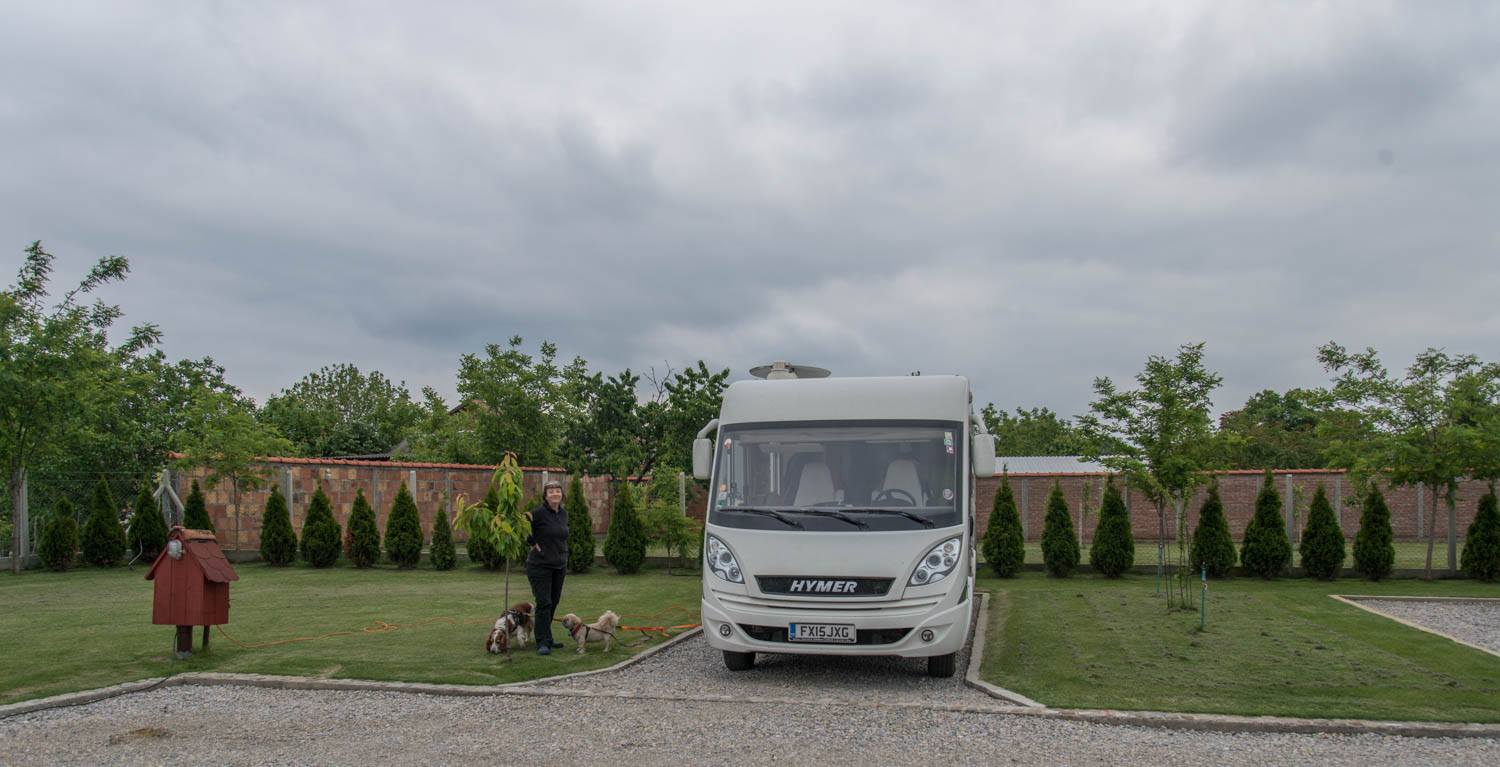
It’s a lovely site, although it is still unseasonable cold: about 12ºC today. The owner says he would normally expect 30º at this time of year.
The plan is to base ourselves here for the next three nights and probably have one day in Belgrade and a second in Novi Sad and around.
